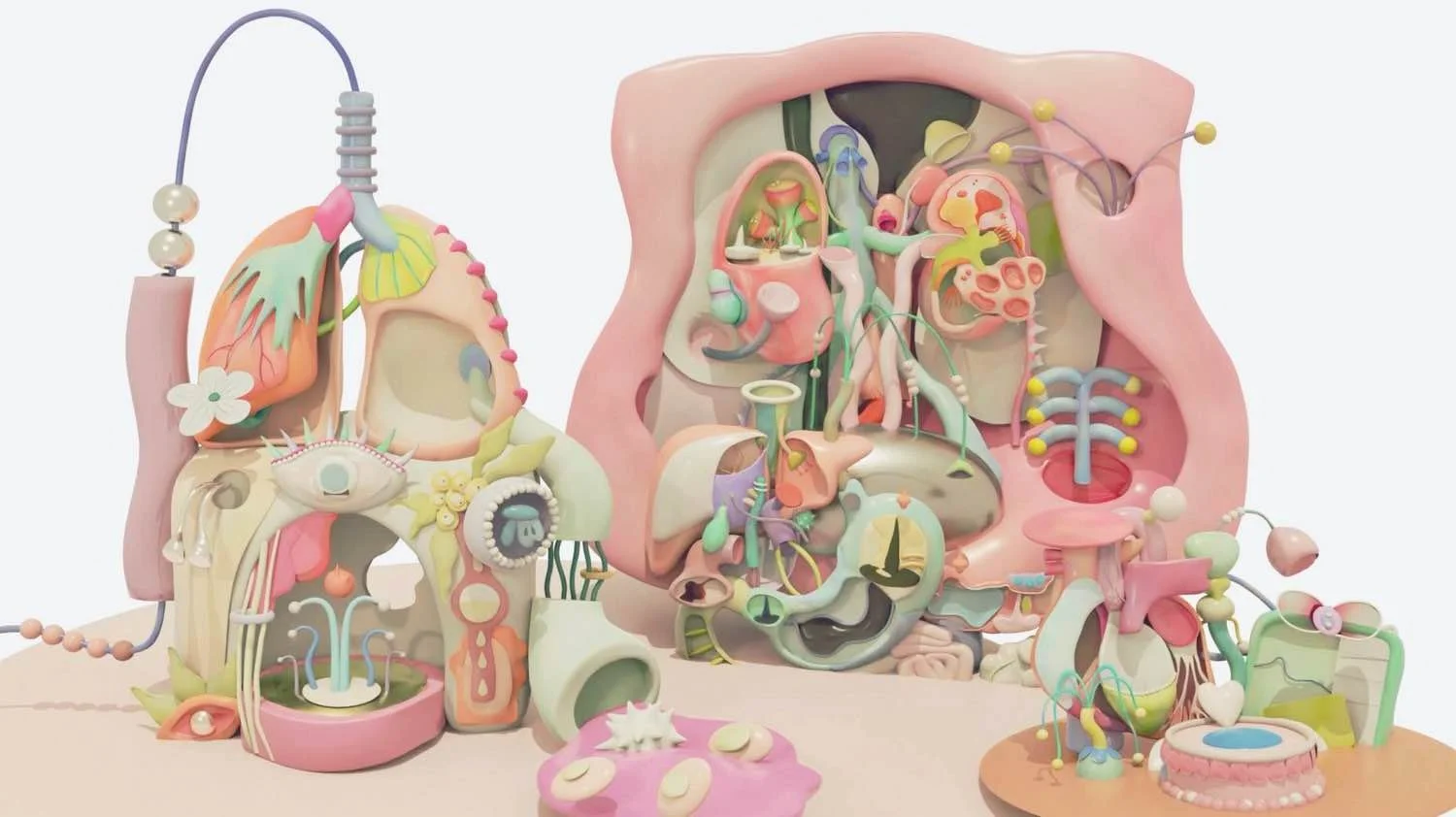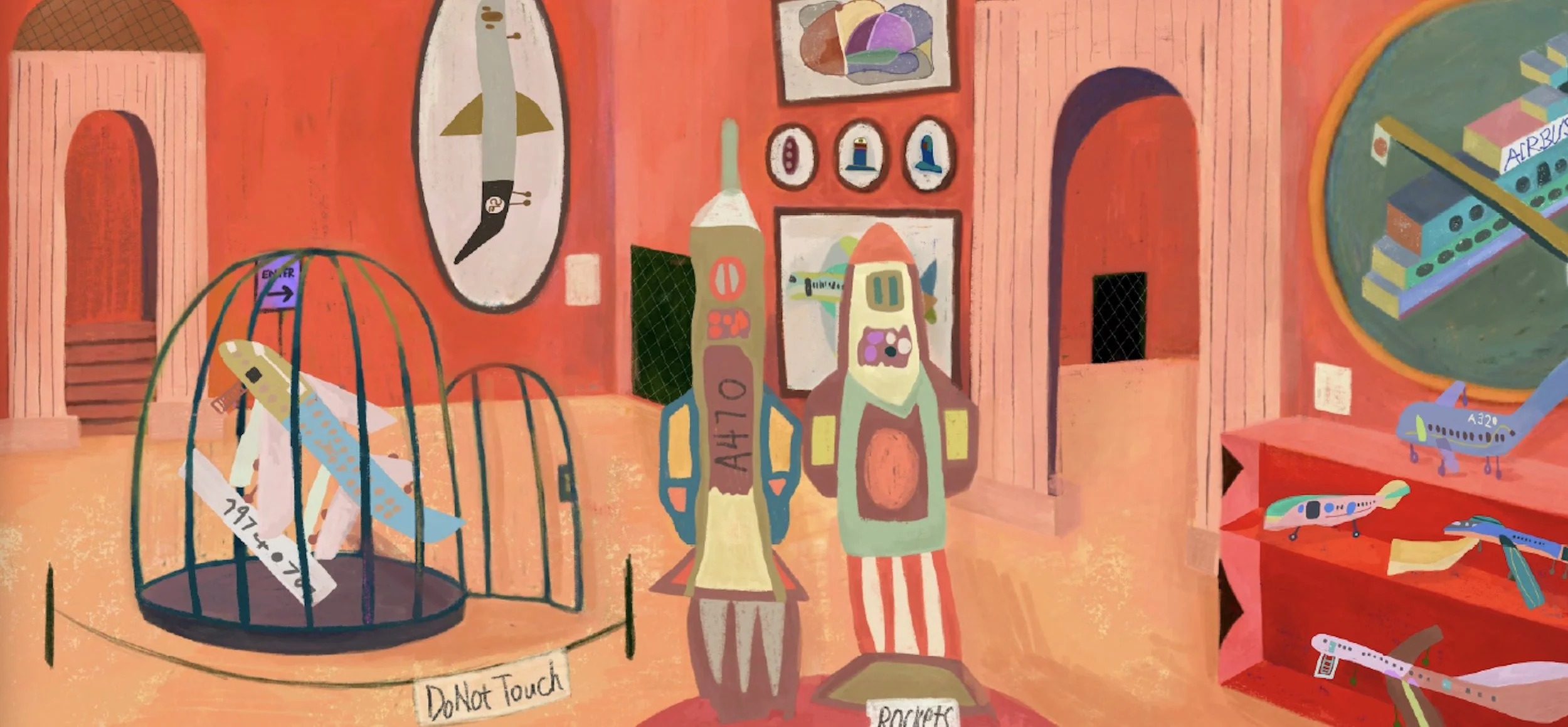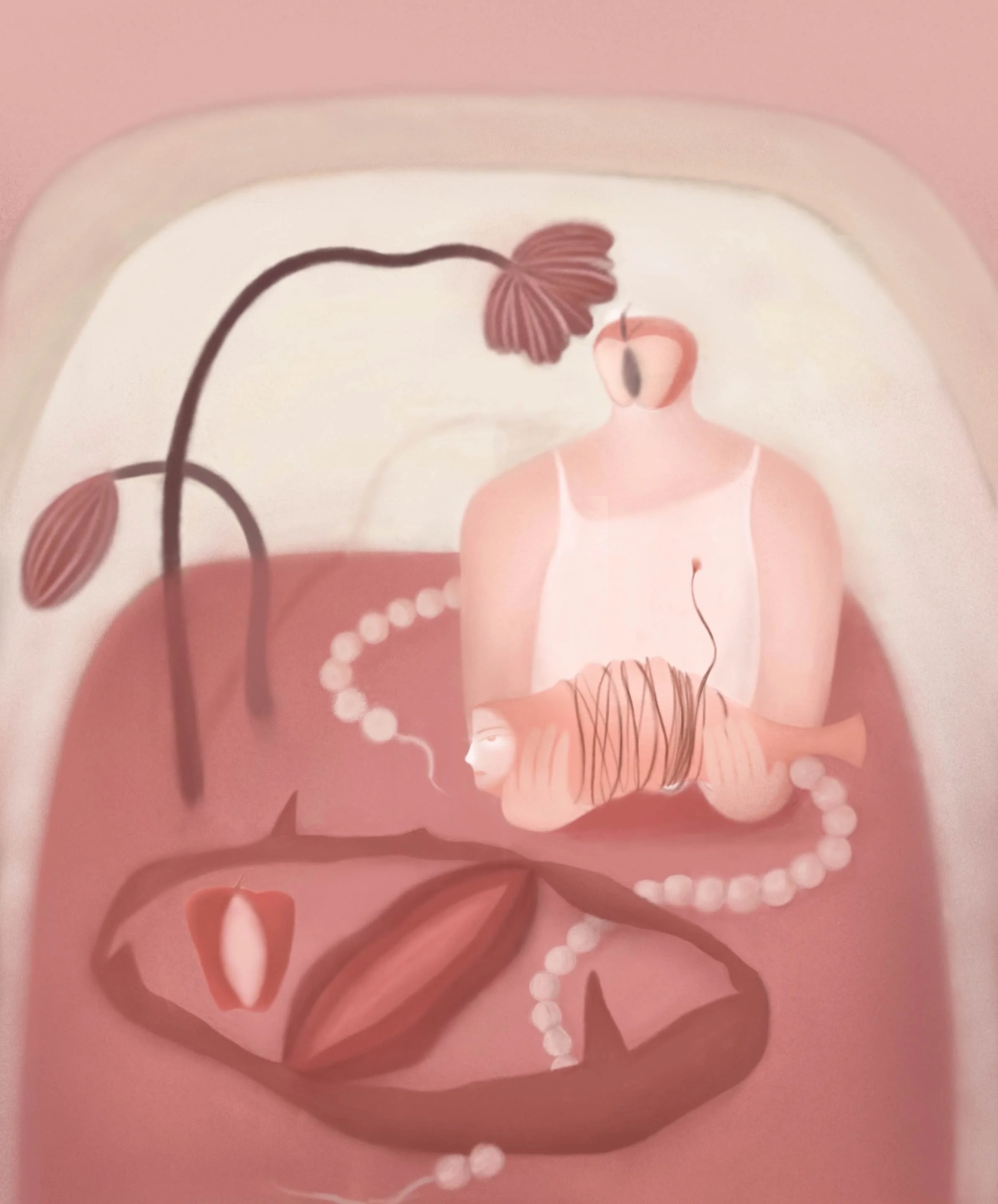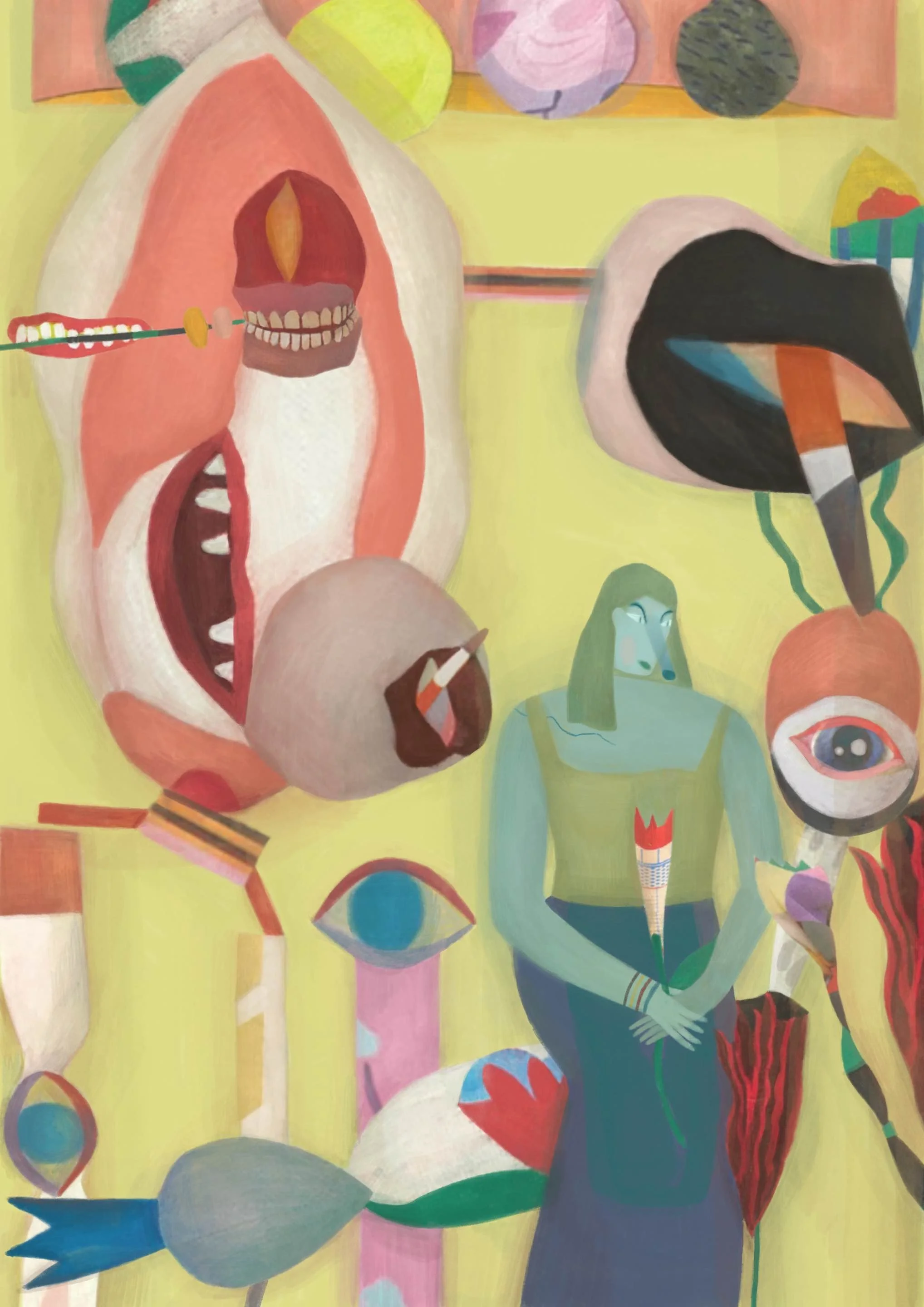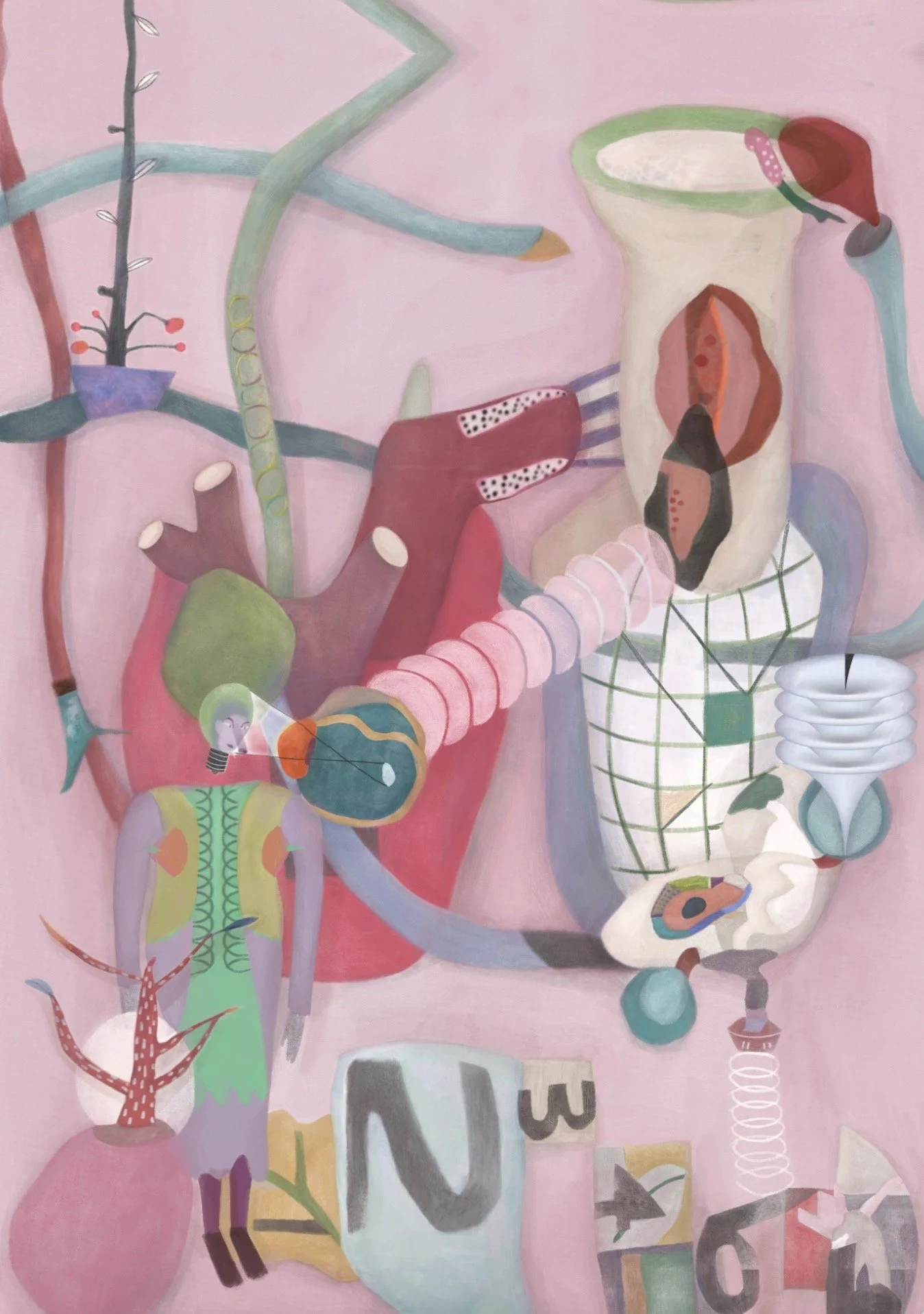Care as Method in the Work of Ding Yudan
London-based artist Ding Yudan (Yuna) works across illustration, soft sculpture, and digital 3D, developing a practice in which motherhood and everyday life function less as subject matter than as method. Trained in Visual Communication at the Royal College of Art, she extends illustration’s narrative clarity into a language of arrangement—how images are framed, sequenced, and staged so that intimate material can circulate publicly without being emptied of its grain. Her recent bodies of work repeatedly test how private traces become publicly legible, and what is gained—and risked—when that translation occurs.
The clearest articulation of this method is YoYo’s Airplane Museum. Beginning from drawings made at home by her young son, Ding re-situates those marks within a compact museum ecology: plinths, vitrines, and small instructional signs. The child’s line retains its informal warmth, yet the display grammar alters our relation to it. We are no longer encountering a family keepsake; we are addressed by an object that has been placed, cared for, and gently regulated. The project reveals a contradiction at the heart of caregiving and emotional labor: preservation coincides with delimitation. Ding is not documenting private life; she is organizing a scene of looking, asking what is protected, what is restricted, and who gets to read.
Love to Fish (2023) develops this contradiction through a symbolic narrative. The apple enters as a citation of the biblical forbidden fruit—long associated with pleasure, especially erotic pleasure; its core recalls the form of the female vulva. In Latin, malum names both “apple” and “wrong,” nesting desire and error in a single term. The fish references Abraham Twerski’s parable of “fish-love”: the claim “I love fish” often masks a more candid admission—I love the satisfaction it gives me. By setting these allegories side by side, Ding converts relational scenes into objects of contemplation. A restrained palette and altar-like compositions hold the images still long enough to pose two questions that matter: Is this care or consumption? Is this love or self-love? Where YoYo’s Airplane Museum foregrounds the protective frame, Love to Fish freezes intimacy just as it is about to slide into possession.
With Identity of Yuna (2024), the question returns to the self. The project originates in a simple gesture: cutting a clothing label and pausing to read the text—“100% cotton,” “do not iron,” “wash cold,” “made in Italy.” The label reads like an identity sheet for the garment. From that observation, Ding builds a taxonomy of her own life across four stages—child, girlhood, wife, mother. She collages memories and traits into four illustrations, extracts recurrent elements into stage-specific iconography, and ultimately transforms the graphics into a garment sculpture, allowing a written identity to return to the body as wear. According to Judith Butler's concept of performativity, these behaviors do more than only symbolize identity; they also create how identity is experienced, acknowledged, and read through repetition—iconizing, labeling, and wearing. The work refuses the binary between self-naming and being named by others, showing how both are entangled in everyday practice.
Seen together, the three projects highlight the conflicting nature of caregiving and emotional labor. In YoYo’s Airplane Museum, care manifests as preservation and placement, yet it necessarily introduces rules and boundaries. In Love to Fish, tenderness is inseparable from appetite; affection risks becoming a form of use. In Identity of Yuna, care turns toward self-maintenance and self-cataloguing, alternating between autonomy and social legibility. Crucially, Ding does not resolve these tensions. She creates conditions in which contradiction can be sustained and investigated. In her works, form is not ornament; it is the means by which intimacy remains visible without tipping into sentiment. In Ding’s hands, illustration begins to operate not only as storytelling but as a method of display.
Seen in this light, her practice sits within contemporary illustration’s expansion toward installation and objecthood—and, in recent work, toward fashion-adjacent forms, most notably the garment sculpture in Identity of Yuna. Her contribution is a careful boundary practice. Illustration is not merely style or story. It operates as a soft grammar of display—part archive that keeps memory in reach, part stage that arranges relations, and a temporary resting place where identity can be tried on and tested. Her training enables a fluid movement between image, object, and exhibition, allowing intimate material to enter public discourse while maintaining its contingencies.
Public circulation raises questions that the artwork does not ignore. When private experience is placed within institutional frames or thematic platforms, does it risk being over-explained—or tamed into a single reading? How does an artist decide what to translate, what to hold back, and what to materialize as an object or garment? These questions will surface again as Ding participates in Inspired Her (Melbourne, 23–30 August 2025), a program dedicated to celebrating and amplifying women’s voices through artistic expression. The platform’s focus on personal narrative, cultural memory, and the emotional landscapes of womanhood speaks directly to the maternal epistemology and care work that structure Ding’s practice, while providing a context in which the specifically female inflections of her images can be read, debated, and complicated rather than reduced to biography.
A recent project, WARMENG (2025), also warrants attention. Built from 3D illustration, moving image, and sound, it constructs a virtual interior of the body where emotions, hormones, and physiology interact. Framed as a metaphor for “happy hormones,” WARMENG visualizes organ–emotion symbioses as circulating energy and extends Ding’s method into time-based, multisensory space—inviting viewers not only to look but to briefly inhabit the system that governs feeling.
In the end, the significance of Ding Yudan’s practice lies in this precise calibration of means and stakes. She crafts rooms rather than arguments: a child’s drawing carefully situated; a relationship held still long enough to scrutinize desire; a label returned to the body as wear. We are not asked to solve a riddle, but rather to record how our gaze interacts with the work—what we approach, where we linger, and what we ignore. In doing so, her projects offer a model for how illustration, as a contemporary practice, can exceed description: structuring attention, shaping legibility, and holding open the space in which intimacy meets the public.
Edited by Alicia Puig


